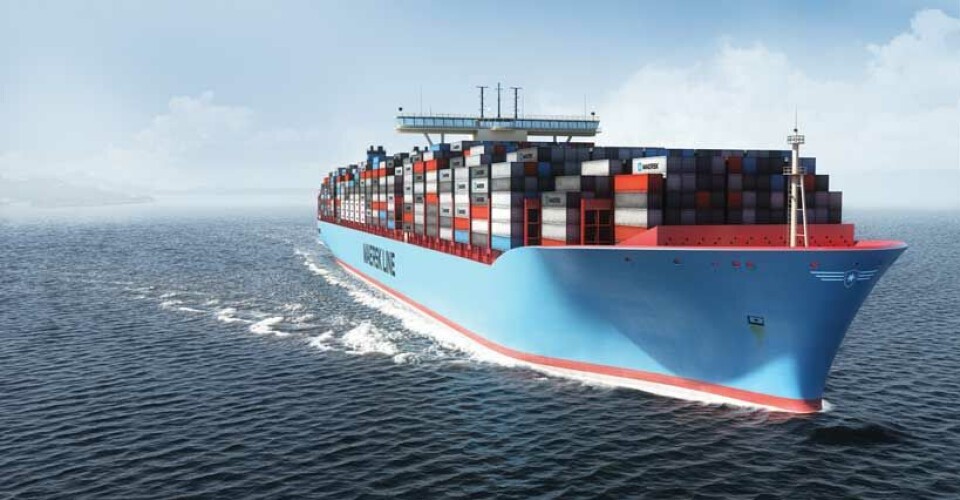
Maersk orders 18,000 TEU container vessels
Maersk Line has signed a contract with Korea’s Daewoo Shipbuilding & Marine Engineering Co. Ltd. to build ten of the world’s largest and most efficient vessels, with an option for an additional 20 vessels. Scheduled for delivery between 2013 and 2015, Maersk hope they will entirely change the shipping industry’s understanding of size and efficiency.
Denne artikkelen er tre år eller eldre.
The class of vessels is called “Triple-E” for the three main purposes behind its creation: economy of scale, energy efficiency and environmentally improvements. These new container vessels do not just set a new benchmark for size, but will also surpass the current industry records for fuel efficiency and CO2 emissions per container moved held by the Emma Mærsk class vessels.
Four-hundred metres long, 59 metres wide and 73 metres high, Triple-E will be the largest vessels of any type on the water today. Its 18,000 TEU capacity is 16 percent greater (2,500 containers) than today’s largest container vessel, “Emma Mærsk”.
The Triple-E will produce 20 percent less CO2 per container moved compared to “Emma Mærsk” and 50 percent less than the industry average on the Asia-Europe trade lane. In addition, it will consume approximately 35 percent less fuel per container than the 13,100 TEU vessels being delivered to other container shipping lines in the next few years, also for Asia-Europe service.
Addressing environmental challenges
– One of the biggest challenges we face in the world today is how to meet the growing needs of a growing population and the impact that is going to have on our planet. International trade will continue to play a key role in the development of the global economy. But, for the health of the planet, we must continue to reduce our CO2 emissions. It is not only a top priority for us, but also for our customers, who depend on us in their supply chain, and also for a growing number of consumers who base their purchasing decisions on this type of information, says Eivind Kolding, CEO of Maersk Line.
The Triple-E vessel is a significant step towards addressing the environmental challenges associated with transporting goods around the world. Each vessel will cost USD 190 million. Besides its size, which provides vastly superior economies of scale compared to other vessels, the efficiency of Triple-E comes from its innovative design.
Two ultra-long stroke engines turn two propellers, and specially optimised hull and bow forms guide the vessel through the water at the speeds typical in the industry today. An advanced waste heat recovery system captures and reuses energy from the engines’ exhaust gas for extra propulsion with less fuel consumption.
Recycling
To reduce the environmental impact of the vessels beyond their lifecycle, Maersk Line is setting a new standard for the way vessels are recycled. All the materials used to build the Triple-E class will be documented and mapped in the vessel’s ‘cradle-to-cradle passport’. This means that when the vessel is retired from service, this document will ensure that all materials can be reused, recycled or disposed of in the safest, most efficient manner.











